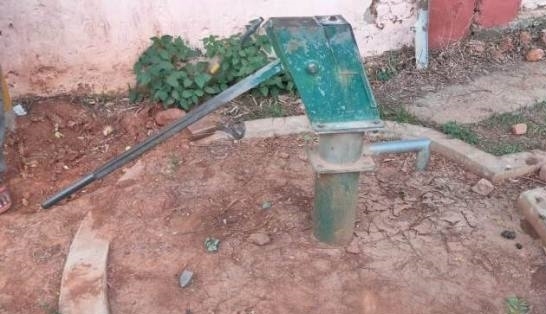Considering low visibility and lesser management cost, dependency on ground water is substantially high in comparison to surface water. Besides, when majority of rainfall occurs during monsoon over a few odd days, ground water resources sustain us for rest of the year. Probably that is why more than 90 per cent in rural areas still depend on ground water for drinking and domestic purposes.
All these years, emphases have been primarily on harnessing surface water – not ground water, leading to inadequate initiatives for sustainable use and augmentation of ground water resources. The policy of looking at ground water as an infinite resource started after food scarcities of 1960s, while policies were tailored towards increased irrigation coverage. Suddenly, users of drinking water and irrigation, a singular entity till then, became two distinctly different categories frequently at loggerheads with each other. As a result, extraction of ground water for irrigation rapidly increased. While drinking water sector was cautious of over-exploitation, irrigation sector went on promoting sources through huge subsidies in the name of irrigation efficiency. Third major claimant for ground water emerged when small, medium and large industries were set up in the name of industrialisation and liberalisation.
Besides, considering our changing lifestyle, more concrete structures came in using ground water in an unregulated manner. Inclination towards urbanisation has created huge concrete structures in peri-urban areas, which are completely dependent on ground water – during and post construction use. An increase in concrete structures always minimises natural recharge zones for ground water and intensifies surface run-off causing flash flood, which many urban units are facing now a days.
Various studies have revealed that rainfall pattern is changing drastically. Around one third of annual precipitation is taking place within a span of 3-4 days, which is causing severe flood and drought in subsequent days. This has led to drastic reduction in flow of rivers, with major rivers remaining dry for about two-third of a year. This has been forcing all to further depend upon ground water to meet their requirements. While dependency on ground water has increased significantly, efforts to augment it have been lacking. Changes in rainfall and land use pattern are increasingly affecting percolation of rainwater into ground. Even if we get sufficient rainfall, that hardly makes any contribution as it flows away as high velocity runoff. Due to change in pattern of rainfall, people have started shifting from rain-fed agriculture to irrigated high-yielding agriculture. This is again increasing pressure on ground water.
Everybody believes that there is plenty of water inside the ground. But nature has taken lakhs of years to build up its ground water reserves. Rainwater first goes into soil and then moves underground. It is not static, but dynamic – an ongoing process. If this process is disrupted – whether by reduction in amount of water going into soil, disruption in underground movement of water or over-extraction – there will be depletion of resources. Even if water is artificially sent into ground, it takes its own time to reach ground water aquifer. The current situation gives serious indications that the water cycle is disturbed and it will reduce not only availability of water, but also its quality. Poor quality water is as good as no water or even worse. Artificial recharge has its own limitations in addressing immediate ground water situation. Still that is the most important avenue available before us to mitigate serious damage to ground water cycle.
Despite focus on rain water harvesting, definite steps are awfully lacking in this direction. Water harvesting and water recharge are yet to be mandatorily enforced.
Though under the current flagship programme for drinking water – ‘Jal Jeevan Mission’, water harvesting measures are taken up seriously, this is all about handling supply side of it – augmenting ground water source. But step towards handling demand side – reducing load on groundwater use is lacking. This warrants a prudent ‘water security planning’ involving the community. This will not only look into structural intervention for recharging ground water, but also will look into regulating groundwater extraction at community level, shifting their lifestyle and livelihood from water intensive practices to water sensitive practices, and most importantly helping communities move ahead with conjunctive use of water – not just dependent on one source i.e. ground water.
Ground water is the last hope for a water-starved population. It is like a bank account, where only withdrawal takes place, without deposit. Of course, there is a limit after which our withdrawal request will be refused. Hope that time does not come!
The writer works with the WaterAid India, Bhubaneswar. Views are personal.






































